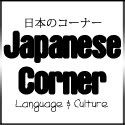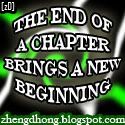A brief introduction to Japanese writing:
1)
Hiragana (
ひらがな) is the set of symbols most likely to a Japanese "alphabet." Unlike the romanized alphabet, however, hiragana is made up of entire syllables, and each syllable has the same name as the sound it represents. It can be used to spell out any Japanese word. Books for small children are often written entirely in hiragana.
2)
Katakana (
カタカナ) is used for foriegn words that have been imported into Japanese. Like hiragana, it is a set of syllables used to spell words. Most of the same sounds are used in katakana as in hiragana. If your name is not Japanese, this is the set of syllables that would be used to spell it. Katakana has a sharper or squarer look than hiragana and so is often used for emphasis, especially in subtitles for TV programs.
3)
Kanji (漢字) is a set of symbols derived from the Chinese writing system. Each symbol represents one or more syllables in a word, but unlike just spelling a word, these symbols also have meaning by themselves. Even if two words are spelled the same in Japanese, if their meanings are different, their kanji will also be different. Kanji can be used in compounds and in conjunction with the other two writing systems. To read a newspaper, one must know at least the 1,945 Jouyou kanji, hiragana and katakana. These are taught in elementary school and junior high school.
4)
Romaji (
ロマジ) is the romanization of Japanese words. With romaji you can read Japanese without learning Japanese writing. But this is not recommend to learn just Romaji.






















